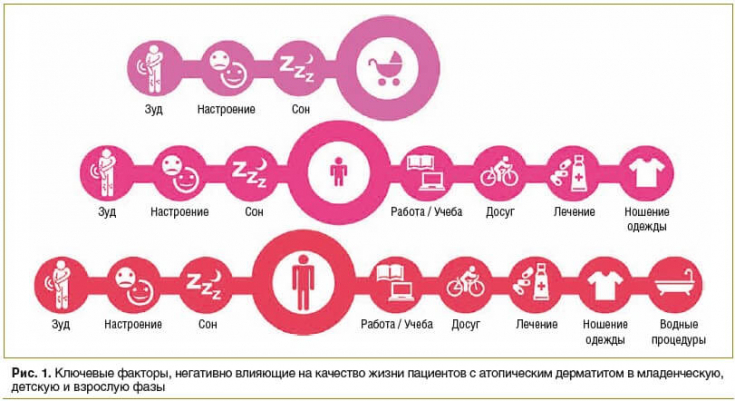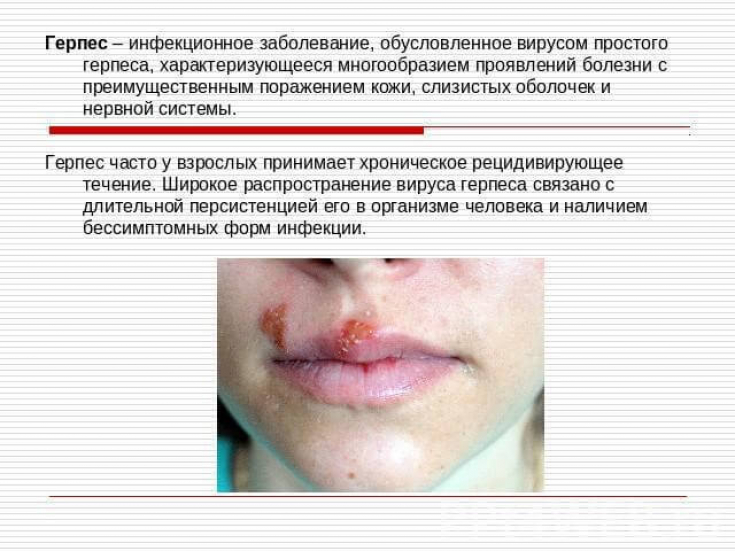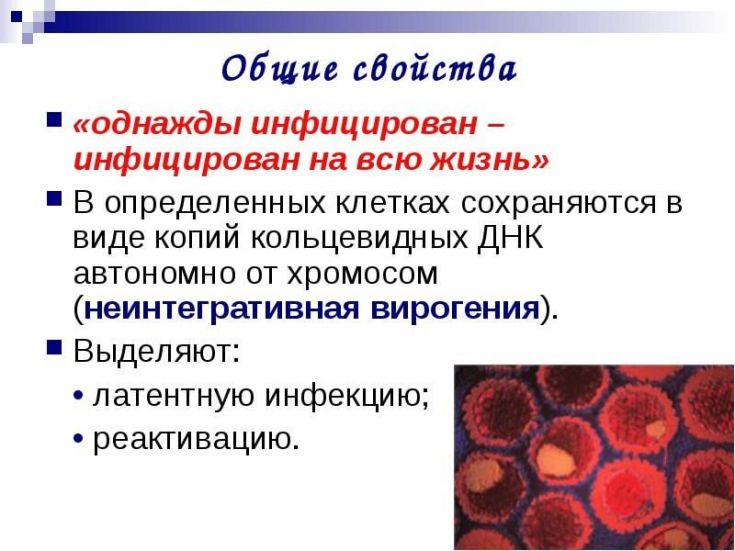Over the past 15 years, allergies have taken the leading place in the list of the most common diseases in the world.
At the Twenty-ninth Congress of the European Academy of Allergology and Clinical Immunology (eAAC-2010) it was noted that the greatest increase in the incidence of allergies is observed in the child population.
Thus, over the past 10 years, the incidence of atopic diseases has increased by 35% among adults, and among children − more than 100%.
Read the article on estet-portal.com which viral diseases can be a risk factor for development atopic dermatitis.
- The increase in the incidence of atopic dermatitis in the structure of dermatological diseases
- Modern approaches to the treatment of atopic dermatitis
- The role of the herpes simplex virus in the occurrence of atopic dermatitisa
Increase in the incidence of atopic dermatitis in the structure of dermatological diseases
The most common and clinically severe allergic diseases, which usually begin in childhood, traditionally include atopic dermatitis (AD).
According to WHO, more than 1 million people are diagnosed with atopic dermatitis every year.
Follow us on Instagram!
In the general structure of dermatological morbidity, the share of this nosology is 20%, and in the structure of allergic diseases − 50-75%.
In recent years, the incidence of allergodermatosis in children of the first seven years of life has especially increased.
If in the 60s of the last century it was 0.1 -0.5% in European countries, today it corresponds to an average level of 12%.
Immunological aspects of the development of atopic dermatitis
The development of atopic dermatitis at the present stage is considered as a consequence of complex interactions of several factors:
- genetic predisposition;
- environment;
- infectious agents;
- defects in the barrier function of the skin;
- impaired immunological response.
This disease is characterized by polymorphism of clinical forms of skin lesions, staging of the course and the development of concomitant pathological changes in various organs and systems of the bodyma.

Modern approaches to the treatment of atopic dermatitis
The management of patients with atopic dermatitis is regulated by the relevant clinical guidelines, which is based on data from world evidence-based medicine, including PRACTALL Consensus report, Management of atopic eczema in children from birth up to the age of 12 years (NICE 2007), Guidelines on the management of atopic eczema, British Association of dermatologists, etc.
Undoubtedly, the most effective is etiotropic therapy, aimed at eliminating contact with factors that cause exacerbation of the disease.
Only 30-40% of children have atopic dermatitis associated with food allergies alone. To date, more and more often there is evidence of the growing role of herpes infection in the occurrence of this pathology.
The role of herpes simplex virus in the occurrence of atopic dermatitis
70% of children and 80-90% of adults are found to have antibodies to herpes simplex virus (HSV).
The presence of HSV in the human body leads to a decrease in the tension of both cellular and humoral immunity.
The functional activity of non-specific protection factors.
is impairedStudies were conducted to evaluate the effectiveness of complex therapy of atopic dermatitis caused by the herpes simplex virus.
Basic approaches to the treatment of allergic dermatitis
Children who suffer from atopic dermatitis were given:
- acyclovir at the rate of 20 mg/kg body weight 2 times a day for 2 weeks, then 1 time per day for 2 weeks;
- interferon alfa-2b recombinant 500 thousand 2 times a day for 2 weeks, then 2 times a week for 2-3 weeks;
- probiotic (2 billion L.acidophillus + B.lactis + fructooligosaccharides) 1 tab. 2 times a day for a month.

Positive dynamics of clinical manifestations on the skin (disappearance of rashes, itching, burning, soreness) on the fifth day of treatment was observed in 97.8% of patients for children and in 98.5% of patients for the adolescent form of atopic dermatitis.
Patients with juvenile form of AD were prescribed:
- acyclovir at the rate of 20 mg/g body weight 2-3 times a day for 2 weeks, then 1 time per day for 2 weeks;
- interferon alfa-2 recombinant 1000000 − 2 times a day for 2 weeks, then 2 times a week for 2-3 weeks;
- probiotic containing live Lactobacillus rhamnosus GG - 1 sachet 1 time per day for a month.
Topical therapy included: aciclovir cream 4-6 times a day was applied topically to the rashes.
The proposed complex treatment of atopic dermatitis was effective in 96.7% of patients with the childhood form and 97.3% of patients with the adolescent form of the disease.
Complex treatment of atopic dermatitis caused by herpes infection contributed to:
- significant recovery of CD3+ lymphocytes, CD4+ cells, subset of CDS+ cells, CD22+ lymphocytes and CD16+ cell count;
- increased levels of serum immunoglobulins IgG, IgA, IgM in children.

After complex treatment of AD caused by herpes infection of childhood and adolescence, there was a significant decrease in the level of antibodies IgG and IgM to normal > HSV1 / 2.
The results of these studies indicate that the herpes simplex virus plays a significant role or is a trigger factor in the development of atopic dermatitis, which can later be used to develop methods of prevention of this disease in persons with burdened anamnesis.







Add a comment